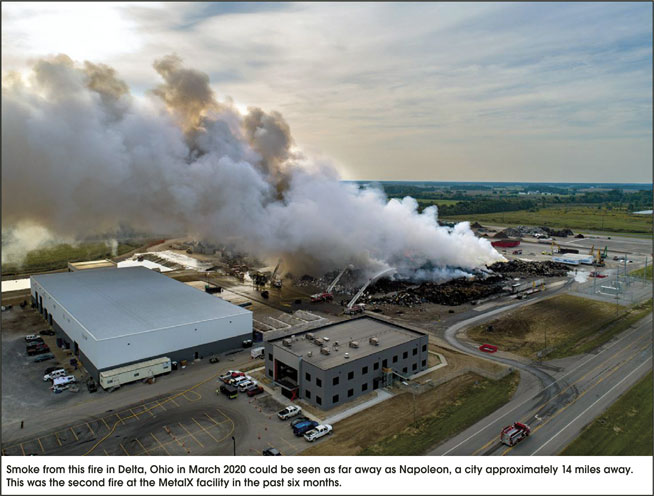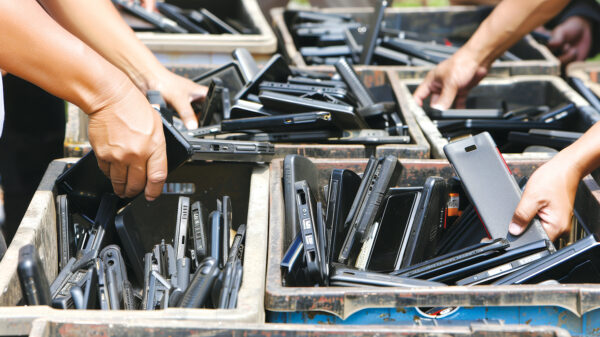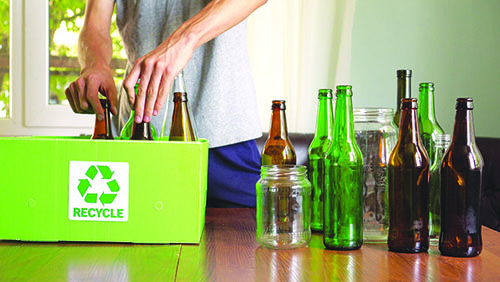by MAURA KELLER
The metal recycling industry is challenging – especially in the area of safety and fire prevention.

Take the recent large fire at the Northern Metals Recycling plant in Becker, Minnesota, which burned for several days before being extinguished. The fire sent billowing plumes of smoke into the air for days causing the Minnesota Pollution Control Agency to “monitor the ambient air for particulate matter,” at four locations near the plant.
While the cause of the fire at the Becker metal recycling plant is still under investigation, a week before the Becker fire erupted, fire inspectors cited Northern Metal’s facility in north Minneapolis for a variety of code violations related to its outdoor storage practices.
The code violations at Northern Metal’s facility in Minneapolis include towering piles of metal, lack of an emergency response and fire safety plan, storing combustibles under high-voltage transmission lines, and not having proper fire lanes cleared and marked, among other things.
In addition to fire prevention being top of mind for metal recyclers and others within the recycling industry, Dominic Spadafore, associate vice president at Hoefer Wysocki Architecture said the latest safety practices have expanded beyond sharp objects and large machinery.
“We’ve recognized pollution, hazards from the processing of materials, and the negative effects of contaminants on human and environmental health,” Spadafore said. For example, due to off-gassing and airborne pollutants, special attention should also be given to ventilation techniques, any prevailing winds, as well as down-wind environments. This is especially important in the case of a fire.
As part of this initiative, captive air ventilation and wind stream analysis are an increasing part of a lot of recycling plant designs.
“Wastewater capture and pre-processing also are crucial features that ensure water is treated before reaching sanitary sewer systems,” Spadafore said. “Significant progress is also being made with safety features on mechanized sorting machines. These provide much higher productivity and reduce accidents for recycling facilities looking to further mitigate material safety issues.”
Mistakes to Avoid
When modifying an existing metals recycling facility or building new, infrastructure capacity is not always reconciled with expected growth of the recycling center and the increased volume of materials processed. This can lead to fire code and other safety violations as Spadafore explained, given the increased use of recycling centers and the updated technologies within the centers, the infrastructure is often overlooked. For example, heightened cleaning requirements use more water, which generates more wastewater – and many sewer systems are not properly equipped for this influx. This can limit the scope of work for operations at the center.
Secondly, adding more mechanized separation equipment and processing lines creates more opportunity for human contact with automated equipment.
“This is inherently dangerous since the processes often require human-to-machine interaction. Supplemental training, greater access to components, and more structure are all ways to increase safety,” Spadafore said.
When it comes to fire safety, metal recycling plants operate under a particularly precarious set of circumstances. According to research conducted by Ryan J. Fogelman, VP of National Accounts for Fire Rover, LLC,
from September 2016 to August 2017 there were 271 waste and recycling facility fire incidents in North America.
With metal recycling, titanium, magnesium and other precious metals are being processed which can pose a combustible dust hazard.
In addition, large duct systems can accumulate flammable dust. What’s more, electrical systems have to be specially designed to support the heavy loads typically introduced by commercial grade equipment. And as equipment is changed or added to over time within a metal recycling plant, the demands on the electrical service can change causing increased stress on systems, which can lead to failure.
“There can also be other hazards in the material stream that pose a safety risks to individuals as well as the entire facility, such as propane tanks and batteries,” said Chris Wirth, vice president of marketing for AMP Robotics. Lithium batteries are a particularly dangerous safety hazard at materials recovery facilities (MRFs) and can cause fires. The increased amount of inventory that many plants may be experiencing, as a result of China’s waste and recycling restrictions also contribute to the issue.
Another area of concern of fire hazard for metal recycling facilities can be in the way that supplies and goods are stored. Many cleaning agents and solvents can spontaneously ignite if stored incorrectly. And storage areas can be inundated with all types of materials in some instances that present issues if piled around outlets or electrical switches.
To prevent these types of hazards experts typically recommend a formal risk management survey of the business be secured. A formal analysis can provide the metal recycling plant owner with an action plan that not only helps mitigate the risks that result in real property and financial business losses but also provides owners with the resources to efficiently respond to disasters when they occur. Fire and ventilation service companies, fire departments, as well as insurance providers, can provide assessments that can identify potential fire hazards in a facility.
The Role of Technology
According to Tom West, strategic relationships manager, MākuSafe, a safety data and analytics company, like most industrial environments, the safety and wellbeing of workers is paramount in today’s world. Common issues in safety and fire prevention are, of course, found in recycling environments.
“There is significant value in firsthand reports from workers to gain insight into what they are experiencing in their jobs. Whether they’re referred to as near miss reports, good catches or front line observations and suggestions, most leaders seem to agree that they don’t receive nearly enough of this kind of insight regardless of the programs or incentives they put in place,” West said.
MākuSafe has developed wearable technology and IoT sensors that are capable of gathering data on ever changing environmental conditions around a worker, which are useful to industrial hygiene.
“Doing this today, and in real time, is a game changer,” West said. “By harnessing the power of cloud computing and machine learning, trends to potential hazards can now be uncovered and preventative action can be taken by leaders to mitigate risk.”
West stressed that increased automation and connected factory systems are increasingly prevalent in the move toward industry 4.0 initiatives – all of which have worker and environmental safety in mind.
Specific to safety, there are a multitude of environment, health and safety systems in the marketplace. Some tools may even offer analytics capabilities. As West explained, the challenges for many metal recyclers may exist in two essential considerations: First, there is a need to shift from traditional measurements of incidents, or things that have already happened, to a proactive and preventative approach.
“Access to leading indicators of risk and hazards is often a difficult effort requiring large investment or substantial time to build,” West said. Second is that in order to take full advantage of capabilities offered by some tools, mining existing data from legacy systems is a big task that requires cooperation cross functionally, and still may not provide valuable insight.
“The benefits of deploying wearables using sensors to gather data, is real time access to valuable data easily and economically,” West said.
Secondly, robotics and artificial intelligence are examples of technologies with great potential to mitigate safety issues commonly found in recycling plants. As Wirth explained, they can replace some of the more dangerous jobs, like sorting, in the recycling field. For example, AMP Robotics uses AI-guided robotics to process high volumes of recyclables, while preventing material contamination from getting into commodity bales for resale. All of these innovative techniques can further streamline the environs of a recycling plant and offset the chance of fire-related issues.
Again, regardless of industry or environment, West said we will likely see increasing importance placed on a proactive and preventative approach to safety and fire prevention.
“The need for meaningful data which can provide insight and evidence will grow, but so will the need for access to such data in an easy and economical way,” West said. “Fostering concern for worker health and safety, creating more effective safety cultures, and demonstrating commitment to sending everyone home safely at the end of the day are in everyone’s best interests.”
Published in the April 2020 Edition







